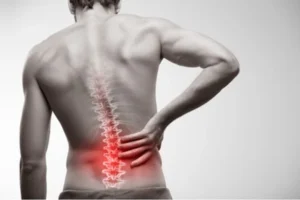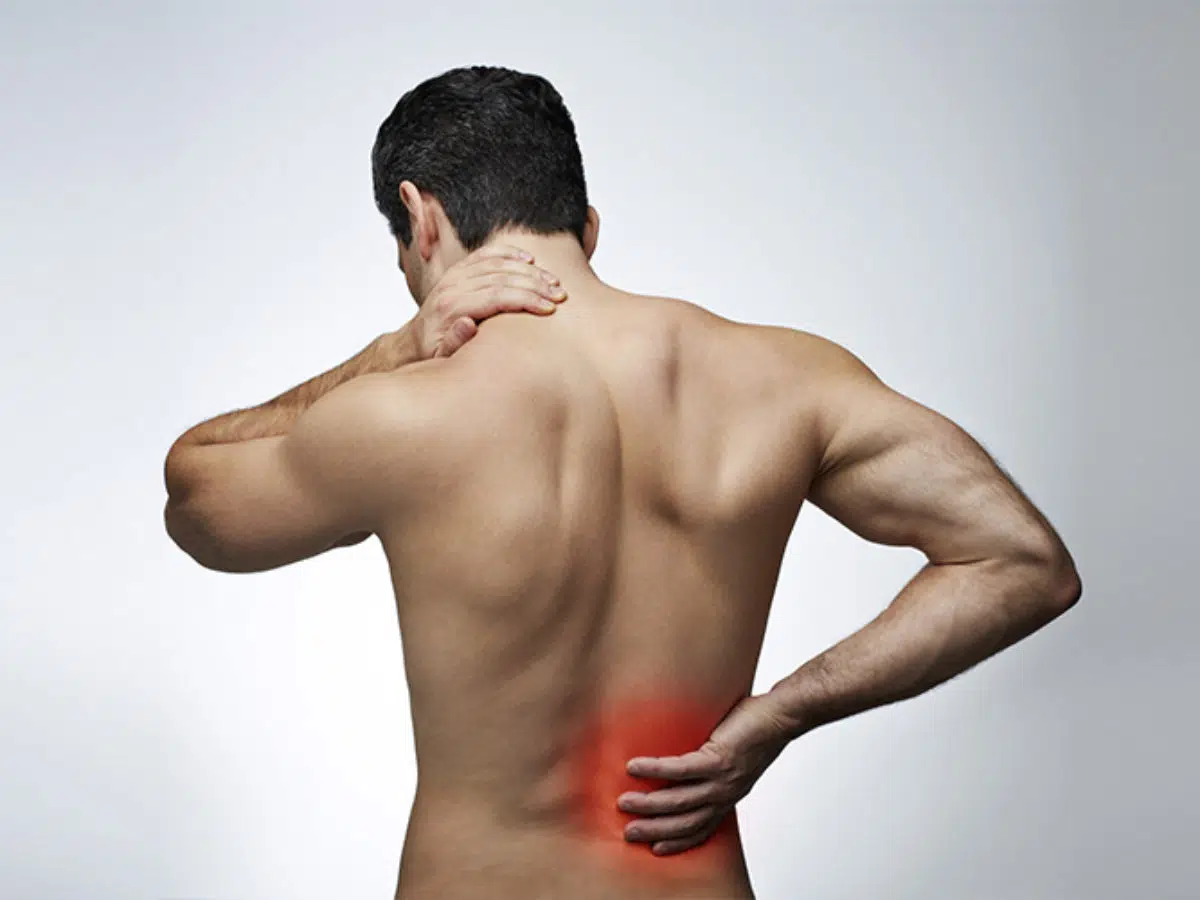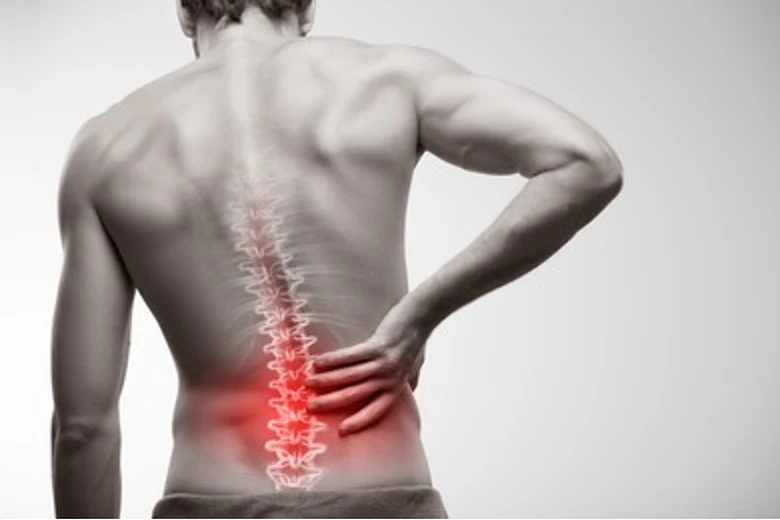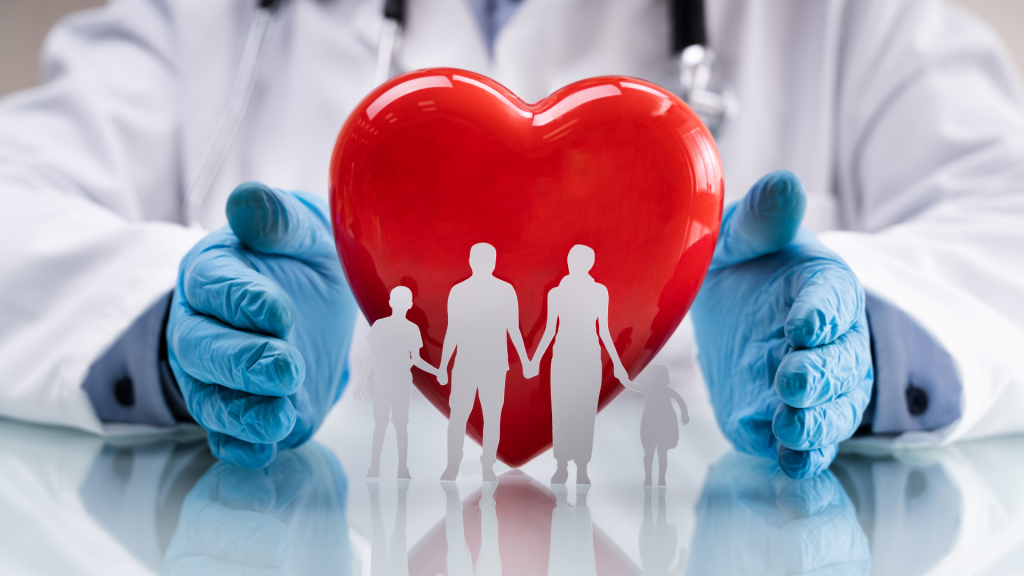
Explore the causes and symptoms of pain around ribs and back, from muscle strain to serious conditions like heart attacks. Learn when to seek medical help and effective treatment options in this comprehensive guide.
Introduction
Pain around the ribs and back can be an alarming experience, leaving many individuals worried about its cause and potential severity. This type of pain can stem from a wide variety of conditions, ranging from minor muscle strains to serious internal organ issues. Understanding the potential causes of rib and back pain is crucial for identifying when it’s time to seek medical help and what treatments may be effective.
A Common Cause of Pain Around Ribs and Back
One of the most common causes of pain around the ribs and back is muscle strain. This can occur when the muscles surrounding the ribcage or in the back are overworked, overstretched, or injured due to physical activity, poor posture, or sudden movements. Muscle strain often leads to sharp or dull pain, which can be localized or spread across a larger area. The pain is typically aggravated by movement, deep breathing, or pressing on the affected muscles. Muscle stiffness, tenderness, and even muscle spasms can also accompany this type of pain. For many, this discomfort may develop after engaging in activities that require repetitive motions, such as lifting heavy objects or engaging in intense exercise without proper warm-up. It’s important to note that muscle strain can occur gradually over time or suddenly, depending on the nature of the activity or injury.
Rib Fractures: When Pain Becomes Severe
Rib fractures are another potential cause of pain around the ribs and back, and this condition is usually the result of a direct impact to the chest, such as from a fall, car accident, or sports injury. The pain from a rib fracture is typically sharp and intense, often worsening with deep breaths, coughing, or movement. Bruising, swelling, and tenderness around the rib area are common symptoms, and the pain may radiate to the back depending on the location of the fracture. Rib fractures can be particularly concerning because they can lead to complications such as damage to the lungs or other internal organs, especially if the fracture is severe. If you suspect a rib fracture, it’s essential to seek medical attention immediately for proper diagnosis and management, as untreated rib fractures can lead to further complications.
CostochonRead adritis: Inflammation Leading to Rib Pain
Costochondritis is an inflammatory condition that affects the cartilage connecting the ribs to the sternum (breastbone). This inflammation can cause significant pain around the ribs and back, particularly in the chest area. The pain is often described as sharp and aching, and it tends to worsen with deep breathing, coughing, or physical activity. Some individuals may also experience tenderness when pressing on the affected area of the chest. Costochondritis can be caused by repetitive strain or injury, but it can also develop without a clear cause. The condition is generally not serious, but it can cause considerable discomfort, leading individuals to seek medical advice for pain management. Treatment typically involves rest, anti-inflammatory medications, and physical therapy to alleviate symptoms.
Pleurisy: Pain from Inflammation of the Lung Lining
Pleurisy is a condition where the pleura, a thin membrane that lines the lungs and chest cavity, becomes inflamed. This inflammation can cause sharp, stabbing pain in the chest that may radiate to the back or shoulder, particularly during deep breaths, coughing, or sneezing. The pain from pleurisy is often described as being worse on one side of the chest and can be accompanied by shortness of breath, fever, and a dry cough. Pleurisy can be caused by a variety of factors, including viral or bacterial infections, autoimmune diseases, and lung conditions such as pneumonia or pulmonary embolism. Due to the potential severity of the underlying causes, it is important to seek medical evaluation if you experience symptoms of pleurisy. Treatment usually focuses on addressing the underlying cause and managing pain through medications and, in some cases, procedures to remove excess fluid from the pleural space.

Gallbladder Issues: Referred Pain to the Back and Ribs
Gallbladder issues, such as gallstones or cholecystitis (inflammation of the gallbladder), can cause significant pain that radiates to the back and ribs. This pain typically originates in the upper right abdomen and can be severe, often described as a sharp, cramping pain that can extend to the back or shoulder blade. In addition to pain, individuals may experience nausea, vomiting, fever, and jaundice (yellowing of the skin and eyes) if the condition is severe. Gallbladder pain often occurs after eating a fatty meal, as the gallbladder contracts to release bile, but it can also happen spontaneously. If you experience these symptoms, it’s important to seek medical attention, as untreated gallbladder issues can lead to serious complications such as infection or rupture. Treatment may involve dietary changes, medications to dissolve gallstones, or surgery to remove the gallbladder.
Kidney Stones: Pain Radiating from the Back to the Groin
Kidney stones are another condition that can cause severe pain around the ribs and back, particularly in the lower back or side. The pain is often described as excruciating and may radiate from the back to the abdomen, groin, or even the inner thigh. Kidney stone pain is typically sudden and can come in waves as the stone moves through the urinary tract. In addition to pain, other symptoms may include blood in the urine, nausea, vomiting, and a frequent urge to urinate. The formation of kidney stones can be influenced by factors such as dehydration, diet, and genetics. If you suspect you have kidney stones, it’s crucial to seek medical attention for proper diagnosis and treatment. Treatment options may include pain management, medications to help pass the stone, and in some cases, procedures to break up or remove the stone.
Shingles: A Viral Cause of Rib and Back Pain
Shingles, also known as herpes zoster, is a viral infection that can cause significant pain around the ribs and back. This condition occurs when the varicella-zoster virus, which causes chickenpox, reactivates in the body, typically years after the initial infection. Shingles usually presents as a painful rash on one side of the body, often wrapping around the ribs or back. The pain associated with shingles can be severe, burning, or tingling, and may begin even before the rash appears. In some cases, individuals may also experience fever, headache, and sensitivity to light. The pain and rash usually last for a few weeks, but some people may develop postherpetic neuralgia, a condition where the pain persists long after the rash has healed. Treatment for shingles focuses on antiviral medications to reduce the severity and duration of the infection, as well as pain relief measures to manage symptoms.
Heart Attack: A Serious Cause of Chest and Back Pain
One of the most serious causes of pain around the ribs and back is a heart attack. While chest pain is the most common symptom of a heart attack, the pain can also radiate to the back, jaw, neck, or arms. The pain is often described as a pressure or squeezing sensation rather than a sharp pain, and it may be accompanied by shortness of breath, nausea, sweating, and dizziness. Heart attacks occur when blood flow to the heart is blocked, typically due to a buildup of plaque in the coronary arteries. This blockage can lead to damage or death of the heart muscle if not treated promptly. If you experience symptoms that suggest a heart attack, it is crucial to seek emergency medical care immediately. Treatment for a heart attack may involve medications to dissolve the blockage, surgical procedures to restore blood flow, and lifestyle changes to prevent future heart problems.
Gastroesophageal Reflux Disease (GERD): Chest Pain Mimicking Heart Issues
Gastroesophageal reflux disease (GERD) is a chronic condition where stomach acid flows back into the esophagus, causing irritation and discomfort. The most common symptom of GERD is heartburn, a burning pain in the chest that may radiate to the back or throat. This pain is often mistaken for heart pain, but it is typically associated with eating, lying down, or bending over. Other symptoms of GERD include regurgitation of food or liquid, a sour taste in the mouth, difficulty swallowing, and chronic cough. GERD can significantly impact quality of life if not managed properly, leading to complications such as esophagitis (inflammation of the esophagus) or Barrett’s esophagus, a condition that increases the risk of esophageal cancer. Treatment for GERD often involves lifestyle changes, such as avoiding trigger foods, eating smaller meals, and elevating the head of the bed. Medications that reduce stomach acid production or neutralize acid can also be effective in managing symptoms.
Pancreatitis: Intense Pain That Radiates to the Back
Pancreatitis is an inflammation of the pancreas, an organ that plays a crucial role in digestion and blood sugar regulation. This condition can cause severe pain in the upper abdomen, which may radiate to the back and ribs. The pain is often sudden and intense, and it may be accompanied by nausea, vomiting, fever, and a rapid pulse. Pancreatitis can be caused by a variety of factors, including gallstones, chronic alcohol use, and certain medications. Acute pancreatitis requires immediate medical attention, as it can lead to serious complications such as infection, bleeding, and organ failure. Treatment for pancreatitis typically involves hospitalization, where patients may receive intravenous fluids, pain relief, and, in some cases, surgery to address the underlying cause. Chronic pancreatitis, on the other hand, is a long-term condition that requires ongoing management to prevent flare-ups and complications.

Lung Conditions: Pain That Worsens with Breathing
Lung conditions, such as pneumonia, pulmonary embolism, or lung cancer, can also cause pain around the ribs and back. This pain is often associated with breathing and may worsen with deep breaths, coughing, or movement. In addition to pain, individuals with lung conditions may experience symptoms such as shortness of breath, wheezing, coughing up blood, and fatigue. Pneumonia, a lung infection, typically causes sharp chest pain, fever, chills, and a productive cough. Pulmonary embolism, a blockage in the lung’s arteries, can cause sudden, sharp chest pain, shortness of breath, and a rapid heart rate. Lung cancer, which may develop over time, can cause persistent chest pain that worsens with deep breathing or coughing. If you experience any of these symptoms, especially if they are severe or persistent, it is important to seek medical evaluation to determine the underlying cause and receive appropriate treatment.
Osteoporosis: A Silent Cause of Rib and Back Pain
Osteoporosis is a condition characterized by the weakening of bones, making them more prone to fractures. While osteoporosis is often called the “silent disease” because it can progress without obvious symptoms, it can lead to significant pain around the ribs and back if fractures occur. The most common fractures related to osteoporosis are vertebral fractures, which can cause chronic back pain, loss of height, and a stooped posture. Rib fractures are also possible and can cause sharp, localized pain that worsens with movement or deep breaths. Osteoporosis-related fractures can occur from minor falls or even simple actions like bending or coughing, depending on the severity of bone loss. Preventing and managing osteoporosis involves lifestyle changes, such as increasing calcium and vitamin D intake, engaging in weight-bearing exercises, and, in some cases, taking medications to strengthen bones and reduce the risk of fractures.
When to Seek Medical Attention
Given the wide range of potential causes of pain around the ribs and back, it’s important to know when to seek medical attention. If the pain is sudden, severe, or accompanied by other concerning symptoms such as difficulty breathing, chest pain, or fever, it is crucial to seek emergency care. This is particularly true if you suspect a heart attack, rib fracture, or pulmonary embolism. For less severe pain, it’s still important to consult with a healthcare provider if the pain persists, worsens over time, or is accompanied by other symptoms such as unexplained weight loss, blood in urine, or a persistent cough. Early diagnosis and treatment can help prevent complications and improve outcomes for many of the conditions that cause pain around the ribs and back.
Treatment Options for Pain Around Ribs and Back
The treatment for pain around the ribs and back depends on the underlying cause. For muscle strain or sprain, treatment often involves rest, ice or heat application, over-the-counter pain relievers, and physical therapy. Rib fractures typically require pain management and limiting physical activity to allow the bone to heal. For conditions like costochondritis or pleurisy, anti-inflammatory medications and pain relief measures are often effective. More serious conditions, such as heart attacks, kidney stones, gallbladder issues, or pancreatitis, require specific medical interventions, which may include medications, procedures, or surgery. Chronic conditions like osteoporosis or GERD require long-term management to prevent complications and improve quality of life.
Preventing Pain Around Ribs and Back
Prevention is key to avoiding pain around the ribs and back. Maintaining good posture, practicing safe lifting techniques, and engaging in regular physical activity can help prevent muscle strain and back pain. For those at risk of osteoporosis, ensuring adequate calcium and vitamin D intake, along with weight-bearing exercises, can help maintain bone health. Avoiding smoking, excessive alcohol use, and managing chronic conditions like diabetes or high blood pressure can reduce the risk of conditions like heart attacks, gallstones, and pancreatitis. Regular medical check-ups and addressing health concerns early on can also play a crucial role in preventing serious health issues that cause pain around the ribs and back.
Living with Chronic Pain Around Ribs and Back
For individuals living with chronic pain around the ribs and back, managing daily activities and maintaining quality of life can be challenging. It’s important to work with healthcare providers to develop a pain management plan that may include medications, physical therapy, and lifestyle modifications. Chronic pain conditions, such as postherpetic neuralgia from shingles or persistent pain from osteoporosis-related fractures, may require ongoing treatment and support. Incorporating stress management techniques, such as mindfulness and relaxation exercises, can also be beneficial in managing chronic pain. Support groups and counseling can provide emotional support and help individuals cope with the challenges of living with chronic pain.
Conclusion
Pain around the ribs and back can be caused by a variety of conditions, ranging from minor muscle strains to serious health issues like heart attacks or lung conditions. Understanding the potential causes and symptoms of this type of pain is crucial for identifying when to seek medical attention and what treatments may be effective. Whether the pain is acute or chronic, addressing it promptly with appropriate medical care and lifestyle changes can significantly improve outcomes and quality of life. If you experience persistent or severe pain around the ribs and back, it’s important to consult with a healthcare provider to determine the underlying cause and receive the necessary treatment.
Read also: Understanding the symptoms of pulled chest muscle female





